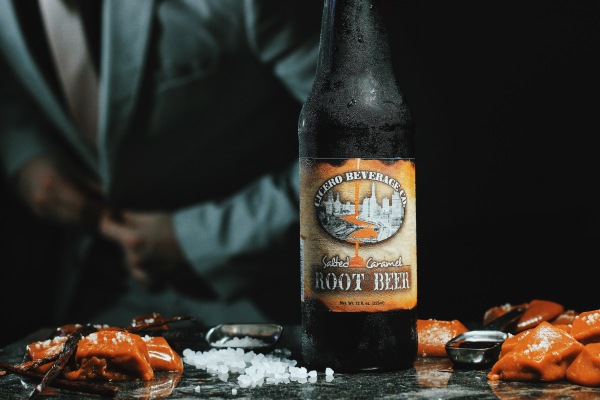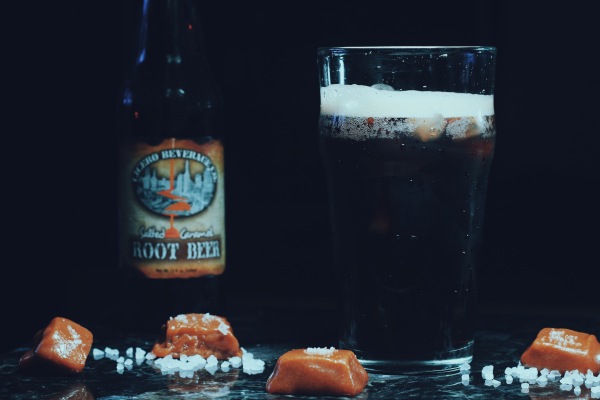History: Sometimes a product comes along in craft soda that’s so novel(ty) and simultaneously cool, you buy it without question. Natrona Bottling Company produces several different flavors likely to catch eyes and furrow brows, from Plantation Style Mint Julep and Pennsylvania Punch to the smaller, more sophisticated Bauser Champayno. But… what is Champayno? On the surface, it appears to be a miniature version of regular soda, perhaps with a mock champagne flavor. I can’t promise you that will be the case and neither can Natrona Bottling’s Owner, the self-proclaimed “Sultan of Soda,” Vito Gerasole. “I don’t know how to describe the flavor,” he confesses. Gerasole is a proud Italian who to this day still works at his family restaurant, Gerasoli, in Pittsburgh, Pennsylvania. But in 2010 he was given a chance to take the reigns of the failing Natrona Bottling Company, a soda bottler that had been in business since 1904. The Natrona, Pennsylvania soda company had just $4,000 left in their bank account when an angel investor provided a financial opportunity for Gerasole to fix things. Fortunately, Natrona had very little debt; all they needed was a new marketing push. But for Gerasole, why take the time and effort to breath life back into a white dwarf in the rapidly expanding craft soda galaxy? “I’m a very nostalgic person,” he tells us. And Natrona is a very nostalgic company. In fact, the bottler’s signature is that it still uses a very old method of production for the bubbles in their soda. How old, you ask? Gerasole boasts, “I believe we are the last soda producer that uses a style of carbonation called ‘pinpoint carbonation’.” Basically what this means is you should taste much smaller bubbles than you’re accustomed to in soda, almost along the lines of champagne. This is achieved by dropping dry ice pellets into pressurized tanks, creating a much smoother, tinier bubble. “Effervescent” is a term Gerasole kept using to describe it. From nearly bankrupt back to bubbling over in business, Gerasole sought to add new flavors to the company. The one he introduced but still doesn’t quite seem to understand is Champayno. It’s a bit of a mystery even to its creators, so much so we have no information with which to detail it. Gerasole best describes it as a 6.3 ounce bottle of dry soda made with pure cane sugar that he one day may transition into a mixer. It was inspired by a similar beverage made by a company called Champay in the 40’s when sugar was being rationed for the war. Admittedly, those sodas were more popular in the 70’s and 80’s. Now that sweeter sodas are back and bigger than ever, Gerasole isn’t sure about the future of Champayno. I’d get your hands on it now while you can because it might just become a collector’s item in the future.
Where to get: You can find Natrona Bottling Company sodas in Pennsylvania, Ohio, and West Virginia. But as for Bauser Champayno, because some retailers don’t stock it, you’re most reliable bet is to buy it online directly from Natrona Bottling.
Nose: Kind of like not quite fermented white grapes – like a fizzy white wine. Pretty mild overall.
Taste: Ginger ale; mild white grapes. This definitely tastes like a dry ginger ale with a white grape influence. The carbonation is flush with lots of tiny, little bubbles that feel nice in the mouth. It’s dry. Very, very crisp for a soda, but with enough sugar to make it easy to drink. There’s a pretty distinctive tang to this soda, and I’d say that’s its defining characteristic. Has more of a zip than most ginger ales, just not in a spicy way. Instead of a spicy kick, this has a tangy white grape flavor that accompanies the dry ginger ale flavor. I wouldn’t call this champagne-like, but rather a unique take on a classic ginger ale.
Finish: Similar to the body of the soda, though slightly more acidic and tangy. Not a lot of variance.
Rating: Does Champayno taste like champagne? No. But honestly, does that really sound like a good idea? If we learned anything from those Harry Potter Jelly Beans that came out years ago, it’s that not everything in life – namely dirt and boogers – needs to be imitated in food. We don’t need champagne-flavored soda either. But we might need Champayno. It’s like a ginger ale that got dressed up for a fancy party. For one, look at the bottle. I’m a full-grown man, and even I think this little 6.3 oz. bottle is cute as hell. The flavors are familiar, yet different. It has all the characteristics of a mild ginger ale: flavor, crispness, and dryness. But there’s also a white grape tanginess you taste here that isn’t present in other ginger ales. This and the carbonation are the only traits that make it remotely comparable to champagne. Champayno is definitely a grower, the problem is that at 6.3 oz., it’s gone before you can really process its unique flavors. For that reason, I don’t think I can confidently rate this higher than three stars, though I definitely think if I had more of the liquid, I might rate it higher. I get that the smaller bottle conveys a greater sense of sophistication, but I think you need about 10-12 ounces of Champayno to fully appreciate it and make a judgement on it. I also think the subtle white grape flavors really work well here and I wouldn’t mind if they were strengthened ever so slightly. There’s a lot of good stuff going on here. It’s fun. It tastes nice. And it looks classy. It’s also not the easiest soda to acquire, which for many will increase the appeal even more. If you can get your hands on a tiny bottle of Champayno you just might be the coolest one at the party. Definitely one to put on your list.


















